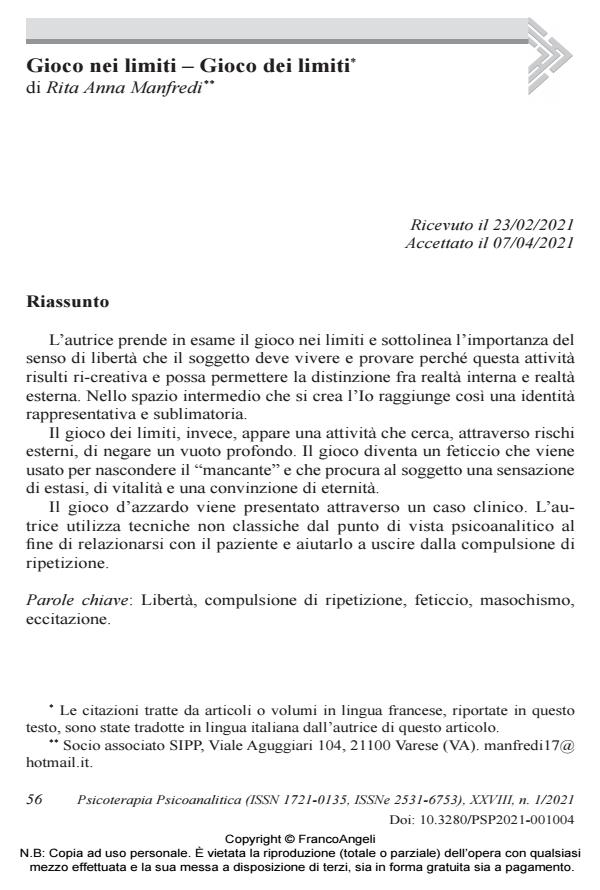Gioco nei limiti - Gioco dei limiti
Journal title PSICOTERAPIA PSICOANALITICA
Author/s Rita Anna Manfredi
Publishing Year 2021 Issue 2021/1
Language Italian Pages 16 P. 56-71 File size 180 KB
DOI 10.3280/PSP2021-001004
DOI is like a bar code for intellectual property: to have more infomation
click here
Below, you can see the article first page
If you want to buy this article in PDF format, you can do it, following the instructions to buy download credits

FrancoAngeli is member of Publishers International Linking Association, Inc (PILA), a not-for-profit association which run the CrossRef service enabling links to and from online scholarly content.
The Author examines the games within the limits and points out the importance of the sense of freedom that the subject must live and feel for this activity to be re-creative and to be able to allow the distinction between internal reality and external reality. In the space in between that is created the ego reaches a representative and sublimatory identity. The game of limits, however, appears as an activity that tries, through external risks, to deny a deep void. The game becomes a fetish which is used to hide the missing and gives the subject a feeling of ecstasy, of vitality and a conviction of eternity. The gambler is presented through a clinical case. The author uses non-traditional techniques from a psychoanalytic point of view in order to relate to the patient and help him to get out from the compulsion of repetition.
Keywords: Freedom, compulsion of repetition, fetish, masochism, excitation
Rita Anna Manfredi, Gioco nei limiti - Gioco dei limiti in "PSICOTERAPIA PSICOANALITICA" 1/2021, pp 56-71, DOI: 10.3280/PSP2021-001004